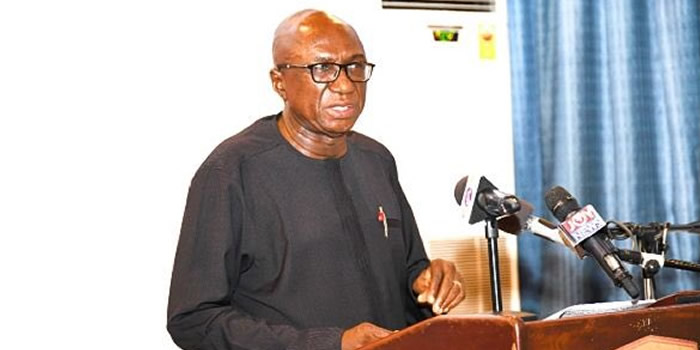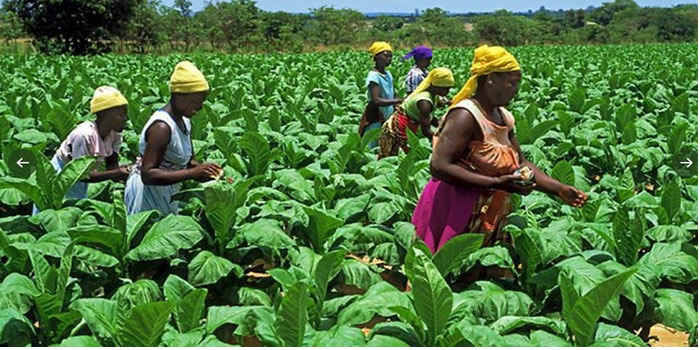

Vulnerability Analysis
Vulnerability is a socio-economic challenge that deprives a group of people in society from realizing their potentials in life. The Growth and Poverty Reduction Strategy (GPRS II) of Ghana defines a vulnerable person as one who does not reach his/her full potential and cannot contribute effectively to the economic growth and sustainable social development in a country. A person deprived of his/her basic rights and needs is also described as vulnerable.
Exclusion is the invariable penitence of vulnerability. That is the extreme form of vulnerability which later becomes a socially accepted concept leading to exclusion of the person involved termed as the excluded. Exclusion therefore leads to a social group referred to as “the marginalized and disadvantaged”. These conditions in society hinder these groups of people from participating in general development and therefore do not contribute to development but become spectators in the society. They are also neglected, in very important activities such as decision-making which would impact positively on their socio-economic wellbeing
Vulnerable and Excluded Groups in the Municipality
Vulnerability Analysis
The vulnerability conditions which often exclude some people from participating in very important activities such as decision-making are identified in the table below. The classification includes the vulnerable and excluded groups and the effects of the vulnerability in the Municipality.
Table 1.26: Vulnerability Analysis
Types of shocks and Risks Faced by Households in the Municipality
The risks and Shocks faced by households in the Municipality ranges from natural events (which cannot be predicted and gives no warning for its occurrence) to man-made (that is conflicts, policy induced, terms of trade shocks, illness and death).
The District practices rain fed Agriculture. However, droughts and at times bush fires are common in the area. As a result, the major shock and risk of this nature affects food availability, incomes and wealth. The economic activities that individuals and households are involved in also determine to a large extent the vulnerability they suffer in terms of income stability and asset loss in the Municipality.
The main types of shocks affecting most households in the district relate to the areas of food insecurity, human insecurity and job insecurity. The unavailability of storage facilities in the Municipality compels farmers to sell off their produce immediately after harvest for the fear of produce getting rotten, or any unforeseen hazards, when prices are low. The same farmers are forced to buy back the produce during the lean season, when prices are at their highest levels.
Other shocks and risks cited include illness, job loss and disability of income earner, loss of assets due to disease (death of livestock) or bushfire or theft/arm robbery on the highway conflicts resulting from chieftaincy disputes and insecurity of land tenure were also mentioned as shocks.
Shocks and risks related to rain storms, flooding, bush and domestic fires are reported events that affect houses including schools, community buildings and other individual property.
Coping Mechanisms / Strategies to Overcome
Shocks In the light of the challenges resulting from the shocks and risks facing households in the Municipality, a number of coping mechanisms are developed by people to enhance their livelihoods. Studies have revealed that households in the rural areas are more exposed to natural and agriculture-related shocks than those in the urban areas. Rural communities respond to shocks of this nature by selling their assets or livestock and informal insurance mechanisms. The non-poor that are those in the urban areas also use self-help mechanisms as well as market-based strategies like falling on personal savings and loans from the banks. The uses of the formal insurance mechanisms are not patronized. This may be due to the information on their existence in the Municipality.
Child Labour Situation
As the first country in the sub-region to endorse the UN Charter on the Rights of the Child therefore, Ghana took the opportunity to address the issue. As a first step towards addressing the issues raised in the protocol, the Ghana government in 2006 put in place a National Programme for the Elimination of the Worst Forms of Child Labour.
Investigations into the matter within the Municipality revealed that there are traces of child laboure in which children are brought from the villages to stay with other parents to attend school and often end up exploited by these persons.
The activities usually undertaken by the children, they are often exposed to lot of hazards which ranges from verbal and physical assault, hunger and stress, isolation from kith and kin, exploitation, and interference in education, psychological and moral abuse, diseases and sexual exploitation. The situation calls for a collaborative effort from all sectors to combat child labour and its worst form which has given a negative signal.
Persons Living in Disaster Prone Areas
Some communities in the Municipality have experienced disasters of many forms, natural and man-made disaster. The various disaster prone areas and the types of disaster are presented in table below.
Programmes and Safety Nets put in Place for the Vulnerable and Excluded
The Municipality recognizing the role of the vulnerable and excluded has designed programmes and safety nets to help them contribute effectively to the decision making process. These programmes and measures are geared towards the prevention of any forms of hardship. The programmes include the mass registration of the identified persons under the National Health Insurance Scheme, the increase in coverage of the LEAP and the establishment of cooperatives and welfare societies. Aside this, the social Security and the National insurance Trust pension schemes for the aged helps retired people to have some livelihood.
Similarly, a series of programmes like, sponsorship packages for the girl child, withdrawal of children in worst form of child labour, abuse, trafficking, appointment of more women into the Assembly, school feeding programme (improving the nutrition of vulnerable children), microfinance especially for women, conditional transfer (LEAP) among other related programmes are focused on improving the living conditions of the vulnerable.
Persons with Disabilities
Persons with disabilities (PWDs) have been defined as those who are unable to or are restricted in the performance of specific tasks/activities due to loss of function of some part of the body as a result of impairment or malformation (Ghana Statistical Service, 2012).
Integrating PWDs into economic activities through improved design of housing and other infrastructure such as transportation, walkways and pedestrian bridges in the country is an important development issue. Therefore the 2010 PHC, gather data on the population with disability, type of disability, distribution by type of locality and socioeconomic data, which are presented under this chapter.
Population with disability
According to the 2010 PHC results, 2.3% of the entire population of the Municipality is reported disabled in one or more forms of disability.
Specifically, among the number of persons living with disability (PWDs) in the Municipality, sight and physical disabilities dominate (0.7% each). However, in terms of sex, the percentage of males for the two forms of conditions is (0, 6% each), whereas that of the female is (0.7% each). However, considering all forms of disability in the district, female disability is higher than the male disability population except emotional disability (female 0.4% and male 0.5%).
Type of Disability
Figure 1.17 shows disabled population in the district by type. Majority of the disabled persons in the Municipality have physical disability (22.6%) followed by those with visual or sight impairment disability 22.4%). This is in contrast with the national where sight leads with about 40%, while physical rather recorded about 25 percent. The lowest proportions of disabled persons in the Municipality are those with speech challenges constituting (10.9%).
Distribution by Type of Locality
Also, as indicated in the table below about 1.7% of the urban population has one or more forms of disability. Out of this, 50 percent are males and females respectively. On the contrary, (2.5%) of the rural population are persons living with one or more forms of disability. Rural male constitutes (2.5%), whiles the female is accounting for (2.6%).
Table 1.28: Population by type of locality, disability type and sex
Source: 2010 Population and Housing Census, GSS
Date Created : 6/21/2023 12:00:00 AM












 facebook
facebook
 twitter
twitter
 Youtube
Youtube
 +233 593 831 280
+233 593 831 280 0800 430 430
0800 430 430 GPS: GE-231-4383
GPS: GE-231-4383 info@ghanadistricts.com
info@ghanadistricts.com Box GP1044, Accra, Ghana
Box GP1044, Accra, Ghana